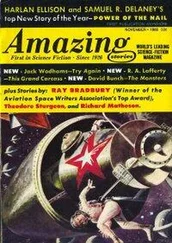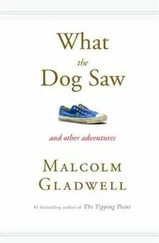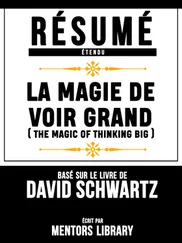Malcolm Gladwell - Blink - The Power of Thinking Without Thinking
Здесь есть возможность читать онлайн «Malcolm Gladwell - Blink - The Power of Thinking Without Thinking» весь текст электронной книги совершенно бесплатно (целиком полную версию без сокращений). В некоторых случаях можно слушать аудио, скачать через торрент в формате fb2 и присутствует краткое содержание. Жанр: Культурология, Психология, на английском языке. Описание произведения, (предисловие) а так же отзывы посетителей доступны на портале библиотеки ЛибКат.
- Название:Blink: The Power of Thinking Without Thinking
- Автор:
- Жанр:
- Год:неизвестен
- ISBN:нет данных
- Рейтинг книги:3 / 5. Голосов: 1
-
Избранное:Добавить в избранное
- Отзывы:
-
Ваша оценка:
- 60
- 1
- 2
- 3
- 4
- 5
Blink: The Power of Thinking Without Thinking: краткое содержание, описание и аннотация
Предлагаем к чтению аннотацию, описание, краткое содержание или предисловие (зависит от того, что написал сам автор книги «Blink: The Power of Thinking Without Thinking»). Если вы не нашли необходимую информацию о книге — напишите в комментариях, мы постараемся отыскать её.
Blink: The Power of Thinking Without Thinking — читать онлайн бесплатно полную книгу (весь текст) целиком
Ниже представлен текст книги, разбитый по страницам. Система сохранения места последней прочитанной страницы, позволяет с удобством читать онлайн бесплатно книгу «Blink: The Power of Thinking Without Thinking», без необходимости каждый раз заново искать на чём Вы остановились. Поставьте закладку, и сможете в любой момент перейти на страницу, на которой закончили чтение.
Интервал:
Закладка:
In that context, then, Coca-Cola’s error with New Coke becomes all the more egregious. It wasn’t just that they placed too much emphasis on sip tests. It was that the entire principle of a blind taste test was ridiculous. They shouldn’t have cared so much that they were losing blind taste tests with old Coke, and we shouldn’t at all be surprised that Pepsi’s dominance in blind taste tests never translated too much in the real world. Why not? Because in the real world, no one ever drinks Coca-Cola blind. We transfer to our sensation of the Coca-Cola taste all of the unconscious associations we have of the brand, the image, the can, and even the unmistakable red of the logo. “The mistake Coca-Cola made,” Rhea says, “was in attributing their loss in share to Pepsi entirely to the product. But what counts for an awful lot in colas is the brand imagery, and they lost sight of that. All their decisions were made on changing the product itself, while Pepsi was focusing on youth and making Michael Jackson their spokesman and doing a lot of good branding things. Sure, people like a sweeter product in a sip test, but people don’t make their product decisions on sip tests. Coke’s problem is that the guys in white lab coats took over.”
Did the guys in the white lab coats take over in Kenna’s case as well? The market testers assumed that they could simply play one of his songs or part of one of his songs for someone over the telephone or on the Internet and the response of listeners would serve as a reliable guide to what music buyers would feel about the song. Their thinking was that music lovers can thin-slice a new song in a matter of seconds, and there is nothing wrong with that idea in principle. But thin-slicing has to be done in context. It is possible to quickly diagnose the health of a marriage. But you can’t just watch a couple playing Ping-Pong. You have to observe them while they are discussing something of relevance to their relationship. It’s possible to thin-slice a surgeon’s risk of being sued for malpractice on the basis of a small snippet of conversation. But it has to be a conversation with a patient. All of the people who warmed to Kenna had that kind of context. The people at the Roxy and the No Doubt concert saw him in the flesh. Craig Kallman had Kenna sing for him, right there in his office. Fred Durst heard Kenna through the prism of one of his trusted colleagues’ excitement. The viewers of MTV who requested Kenna over and over had seen his video. Judging Kenna without that additional information is like making people choose between Pepsi and Coke in a blind taste test.
Several years ago, the furniture maker Herman Miller, Inc., hired an industrial designer named Bill Stumpf to come up with a new office chair. Stumpf had worked with Herman Miller before, most notably on two previous chairs called the Ergon and the Equa. Yet Stumpf wasn’t satisfied with his two previous efforts. Both had sold well, but Stumpf thought that the Ergon was clumsy—an immature effort. The Equa was better, but it had since been copied by so many other firms that it no longer seemed special to him. “The chairs I had done previously all looked alike,” Stumpf says. “I wanted to come up with something that looked different.” He called his new project the Aeron, and the story of the Aeron illustrates a second, deeper problem with trying to measure people’s reactions: it is hard for us to explain our feelings about unfamiliar things.
Stumpf’s idea was to try to make the most ergonomically correct chair imaginable. He had tried that with the Equa. But with the Aeron he went even further. An enormous amount of work, for instance, went into the mechanism connecting the back of the chair with what chair designers call the seat pan. In a typical chair, there is a simple hinge connecting the two so you can lean back in the chair. But the problem with the hinge is that the chair pivots in a different way from how our hips pivot, so tilting pulls the shirt out of our pants and puts undue stress on our back. On the Aeron, the seat pan and back of the chair moved independently through a complex mechanism. And there was much more. The design team at Herman Miller wanted fully adjustable arms, and that was easier if the arms of the chair were attached to the back of the Aeron, not underneath the seat pan, as is ordinarily the case. They wanted to maximize support for the shoulders, so the back of the chair was wider at the top than at the bottom. This was exactly the opposite of most chairs, which are wide at the bottom and taper at the top. Finally, they wanted the chair to be comfortable for people who were stuck at their desks for long periods of time. “I looked at straw hats and other things like wicker furniture,” Stumpf says. “I’ve always hated foam chairs covered in fabric, because they seemed hot and sticky. The skin is an organ, it breathes. This idea of getting something breathable like the straw hat was intriguing to me.” What he settled on was a specially engineered, thin elastic mesh, stretched tight over the plastic frame. If you looked through the mesh, you could see the levers and mechanisms and hard plastic appendages which were out in plain sight below the seat pan.
In Herman Miller’s years of working with consumers on seating, they had found that when it comes to choosing office chairs, most people automatically gravitate to the chair with the most presumed status—something senatorial or thronelike, with thick cushions and a high, imposing back. What was the Aeron? It was the exact opposite: a slender, transparent concoction of black plastic and odd protuberances and mesh that looked like the exoskeleton of a giant prehistoric insect. “Comfort in America is very much conditioned by La-Z-Boy recliners,” says Stumpf. “In Germany, they joke about Americans wanting too much padding in their car seats. We have this fixation on softness. I always think of that glove that Disney put on Mickey Mouse’s hand. If we saw his real claw, no one would have liked him. What we were doing was running counter to that idea of softness.”
In May of 1992, Herman Miller started doing what they call use testing. They took prototypes of the Aeron to local companies in western Michigan and had people sit in them for at least half a day. In the beginning, the response was not positive. Herman Miller asked people to rate the chair’s comfort on a scale of 1 to 10—where 10 is perfect, and at least 7.5 is where you’d really love to be before you actually go to market—and the early prototypes of the Aeron came in at around 4.75. As a gag, one of the Herman Miller staffers put a picture of the chair on the mock-up cover of a supermarket tabloid, with the headline CHAIR OF DEATH: EVERYONE WHO SITS IN IT DIES and made it the cover of one of the early Aeron research reports. People would look at the wiry frame and wonder if it would hold them, and then look at the mesh and wonder if it could ever be comfortable. “It’s very hard to get somebody to sit on something that doesn’t look right,” says Rob Harvey, who was Herman Miller’s senior vice president of research and design at the time. “If you build a chair that has a wiry frame, people’s perception is that it isn’t going to hold them. They get very tentative about sitting in it. Seating is a very intimate kind of thing. The body comes intimately into contact with a chair, so there are a lot of visual cues like perceived temperature and hardness that drive people’s perceptions.” But as Herman Miller tinkered with the design, coming up with new and better prototypes, and got people to overcome their qualms, the scores began to inch up. By the time Herman Miller was ready to go to market, the comfort scores were, in fact, above 8. That was the good news.
The bad news? Just about everyone thought the chair was a monstrosity. “From the beginning, the aesthetic scores lagged way behind the comfort scores,” said Bill Dowell, who was research lead on the Aeron. “This was an anomaly. We’ve tested thousands and thousands of people sitting in chairs, and one of the strongest correlations we’ve always found is between comfort and aesthetics. But here it didn’t happen. The comfort scores got above eight, which is phenomenal. But the aesthetic scores started out between two and three and never got above six in any of our prototypes. We were quite perplexed and not unworried. We’d had the Equa chair. That chair was controversial, too. But it was always seen as beautiful.”
Читать дальшеИнтервал:
Закладка:
Похожие книги на «Blink: The Power of Thinking Without Thinking»
Представляем Вашему вниманию похожие книги на «Blink: The Power of Thinking Without Thinking» списком для выбора. Мы отобрали схожую по названию и смыслу литературу в надежде предоставить читателям больше вариантов отыскать новые, интересные, ещё непрочитанные произведения.
Обсуждение, отзывы о книге «Blink: The Power of Thinking Without Thinking» и просто собственные мнения читателей. Оставьте ваши комментарии, напишите, что Вы думаете о произведении, его смысле или главных героях. Укажите что конкретно понравилось, а что нет, и почему Вы так считаете.












